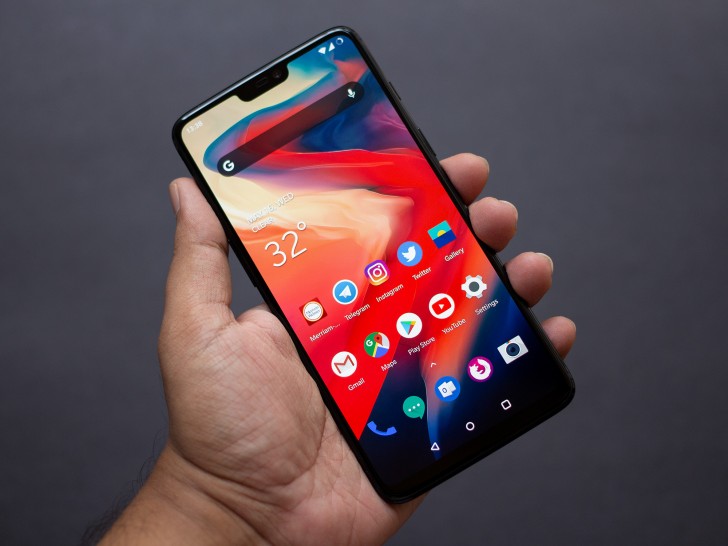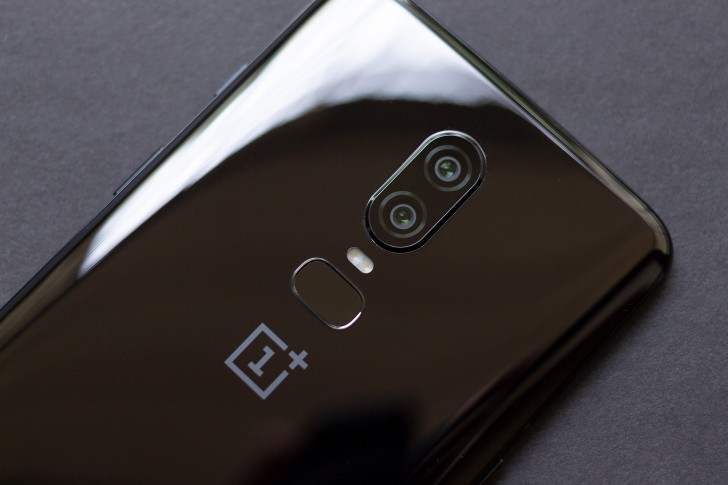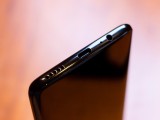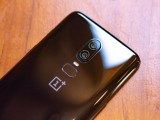Introduction
After months of endless leaks and teasing, it's finally here. The latest flagship from the Shenzhen-based OnePlus, the OnePlus 6.

By now you would already be aware of everything new that's there's to know this phone but if not, here's a summary. The OnePlus 6 is the latest flagship from the company and the successor to last year's OnePlus 5T. The new phone features an updated design that uses glass on the front and back, a first for a OnePlus device. It also has a new edge to edge display with the infamous notch. On the back is a new dual camera system and a fingerprint sensor. Inside is a new Snapdragon 845 chipset with up to 8GB of RAM and 128GB of storage.
With the OnePlus 6, the focus seems to be on speed. OxygenOS, a staple of OnePlus phones, has been optimized to deliver smooth performance even after a year of use. And the phone comes with the same rapid DASH charger that we now all know and love.
OnePlus 6 specs:
- Body: Gorilla Glass 5 on front and back, aluminum frame, splash resistant
- Screen: 6.28-inch, 19:9, 2280x1080 resolution, AMOLED, notched
- Chipset: Qualcomm Snapdragon 845, 4x 2.8GHz Kryo 385 Gold + 4x 1.8GHz Kryo 385 Silver, Adreno 630
- Memory: 6/8GB LPDDR4X RAM, 64/128/256GB UFS 2.1 2-LANE storage
- Primary Camera: 16MP Sony IMX 519, 1.22μm, f1.7, OIS+EIS, 4K60/1080p240/720p480 video, dual LED flash
- Secondary Camera: 20MP Sony IMX 376K, 1.0μm, f1.7
- Front Camera: 16MP Sony IMX 371, 1.0μm, f2.0, EIS, 1080p30 video
- Software: Android 8.1 Oreo with OxygenOS 5.1
- Battery: 3300mAh, 5V 4A fast 'DASH' charging
- Connectivity: Dual nano SIM, LTE, 2x2 MIMO 802.11ac dual-band Wi-Fi, Bluetooth 5.0, NFC, GPS/GLONASS/BeiDou/Galileo, USB 2.0 (Type-C), headphone jack
- Colors: Mirror Black, Midnight Black, Silk White, Avengers Special Edition
- Misc: Face unlock, fingerprint sensor, single loudspeaker, portrait mode (front and rear), alert slider
Unfortunately, we are limited to only discussing the physical form factor of the device with a couple other things. Everything else will have to wait for the full review, which will be out next week. Without further ado, let's get into the things we can talk about today.
Design
The new OnePlus 6 introduces a new design for this generation of the product line. The main attraction here is the liberal use of glass, with both the front and back of the device being covered in Corning Gorilla Glass 5. The aim here was to create the look and feel of ceramic while being significantly lighter (not to mention, cheaper).
Switching from metal to glass does seem to be the trend for 2017-2018, so we are not surprised here and glass does have its advantages. For one, the phone looks stunning out of the box, with a gorgeous piano black finish on our Mirror Black review unit. OnePlus has also painted the side aluminum frame in glossy black, making the glass and metal look and feel indistinguishable. The glass is also extremely grippy in hand, making the phone feel much secure than the metal body phones that came before it.

However, the advantages end there. Even the latest version of Gorilla Glass isn't completely averse to breaking when dropped. Other times, the glass tends to pick up micro-scratches and abrasions, as did our unit in less than a week of use, including one rather deep gash whose origin remains unknown. And when none of that is happening, the phone is also a giant fingerprint magnet. The ultra-glossy finish of the OnePlus 6 attracts smudges like they are going out of fashion.
This is less of an issue with the two other color variants, the Midnight Black and the Silk White, which use a matte finish glass on the back with a silky, sandblasted finish. To match the glass, both these variants also have matte finished aluminum frame. These finishes will hide fingerprints and scratches much better than the Mirror Black but the downside is that they are extremely slippery. Either way, it seems you'd want to use a case with this phone.
Going around the phone, we see some familiar and some new elements. The front has the new 19:9 display with the notch that we already knew about. The phone has remarkably thin bezels all around and although there is a chin at the bottom, it is one of the smallest ones we have come across so far. The overwhelming feel while using the device is that of having an edge-to-edge display and the barely-six-months-old OnePlus 5T looks outdated in comparison. It's understandable though that the notch won't be to everyone's taste and there are downsides to having it but it does create a greater sense of immersion and the way the screen goes to the top corners looks quite neat.
Along the sides, the power button still sits on the right with a nice tactile feel but the alert slider has been moved right above it from being placed on the left side of the phone for all these years.
On the left now sits the dual SIM tray along with the volume control buttons. The buttons this time around are stiffer and less easy to press accidentally compared to the 5 or the 5T however their position means you will still press them every time you are lifting the phone. They also have slightly sharp edges that do not feel pleasant on your fingers.
At the bottom is the headphone jack, a Type-C USB 2.0 port and a thoroughly mediocre sounding loudspeaker that actually sounds worse than the speaker on the 5T.

Bottom side: the 3.5mm audio jack is still here
Around the back is the new dual camera system in a vertical layout with a dual LED flash and the fingerprint sensor. We can't help but feel the fingerprint sensor would have looked better had it been vertically oriented.
Near the bottom is a 'Designed by OnePlus' marking that looks remarkably similar in typeface to the 'Designed by Vivo' marking on the X21. The phone otherwise completely lacks any other markings, making it look very clean.

The backside: Fingerprint reader and a new dual camera
OnePlus claims the phone has been designed to be water-resistant for "everyday occasions, such as rain or an accidental drop in a puddle, rather than for extreme scenarios". This means the phone should survive some amount of exposure to water even without any official certification. But that has largely been true of previous OnePlus devices as well and we would have still like to see some official water-resistant certificate for specificity instead of this somewhat vague description.
One, somewhat underappreciated, thing about OnePlus is the official cases it releases for its phones, which are some of the best we have seen. The OnePlus 6 will also launch with five different OEM cases, which include two bumper cases (Ebony and Nylon finish), and three standard cases (Silicone, Karbon and Sandstone).
All the cases fit great and don't add much to the size of the phone, especially the Karbon and Sandstone cases, which are very thin. The Silicone is available in a nice bright red that complements the black of the phone. Ebony Wood has a nice texture to it and made out of real wood as usual. The newcomer Nylon also has a great texture reminiscent of the DROID Turbo/Moto Maxx.
The bumper cases bring additional protection by covering all sides and having more substantial padding. The physical buttons on the phone work well through every case however the bumper cases do have more restricted headphone port cutout that could prevent some headphones from being used.

Overall, we did like the design and feel of the new OnePlus 6. The glass back and notch have their fair share of advantages and disadvantages and are bound to split opinions but that seems to be the trend of 2018. Hopefully, we will settle on a more rational middle-ground for next year.
Display
The OnePlus 6 has a new 6.28-inch, 19:9 2280x1080 resolution, 'Optic' AMOLED display. The display is slightly narrower physically than the display on the 5T but is taller and has greater horizontal resolution. The panel itself, however, is identical in quality to that of the 5T.


The screen spill to the sides with minimum bezel surface
This isn't such a bad thing as the OnePlus 5T does have a very good display with good color accuracy, good brightness, and good viewing angles. And now you have a bit more of it, so you can't really complain. Sure, OnePlus could have increased the resolution but the real-world advantages of that are nebulous at best. What we would have liked to see, however, is the support for HDR, especially now that the phone finally supports Netflix in HD (albeit, only in 720p).
Our test unit running OxygenOS 5.1.3 also had extremely high touch sensitivity, which caused frequent false positives while using the phone and several accidental touches. The screen would register inputs quite often unintentionally, which wasn't helped by the narrower bezels that made using the phone in bed difficult. The screen also constantly kept waking itself up while inside the pocket when double tap to wake was enabled. It's something that can be fixed with an update though and we hope OnePlus does it.
Initial Impressions
As mentioned before, we are being limited today with what we can share about the phone so even the overall impressions have to be vague. But, from what we observed during our stint with the device is that the OnePlus 6 is most definitely an evolutionary product and a minor evolution at that. This isn't necessarily a bad thing, as previous OnePlus devices have been pretty great so any improvement on that, however small, cannot be a bad thing. But it seems now that in an effort to keep prices low and competitive, OnePlus has to hold itself back with every new version. Then there is also the impending arrival of the OnePlus 6T six months from now, which seems all but inevitable at this point, which means the current OnePlus 6 can't have all the toys to play with.

What that means essentially is that if you're a 5T or even 5 owner, there isn't a ton of new stuff here to justify an upgrade. However, if you're on a 3 or 3T and finally think you're ready to upgrade your OnePlus experience, then this is just the device for you, assuming you don't want to wait six months more.




0 Response to "OnePlus 6 hands-on"
Post a Comment